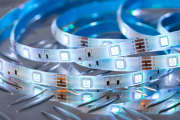Brief Introduction
Semiconductor light-emitting diodes, referred to as LEDs, have been developed since the 1960s and gradually become market-oriented, and their packaging technology is also constantly improving and developing. From the earliest use of glass tube packaging to bracket epoxy packaging and surface mount packaging, low-power LEDs have been widely used.
Since the 1990s, due to breakthroughs in LED epitaxy and chip technology, quaternary Al2GaInP and GaN-based LEDs have come out one after another, realizing full-color LEDs. The luminous brightness is greatly improved, and various colors and white light can be combined.
The input power of the device has been greatly improved. At present, the single-chip 1W high-power LED has been industrialized and introduced to the market. This makes the application of ultra-high-brightness LEDs continue to expand, and the market field of special lighting is gradually moving towards the general lighting market.
Due to the continuous improvement of the input power of LED chips, higher requirements are put forward for their packaging technology. To develop LED in the field of lighting, the key is to improve its luminous efficiency and luminous flux to the level of existing lighting sources.
The epitaxial material used in high-power LED adopts MOCVD epitaxial growth technology and multiple quantum well structure. Although its external quantum efficiency needs to be further improved, the biggest obstacle to obtaining high luminous flux is the low light extraction efficiency of the chip.
The design of the existing high-power LED adopts a new structure of flip-chip welding to improve the light extraction efficiency of the chip. The thermal characteristics of the chip are improved, and the photoelectric conversion efficiency of the device is improved by increasing the chip area and increasing the working current, thereby obtaining a higher luminous flux.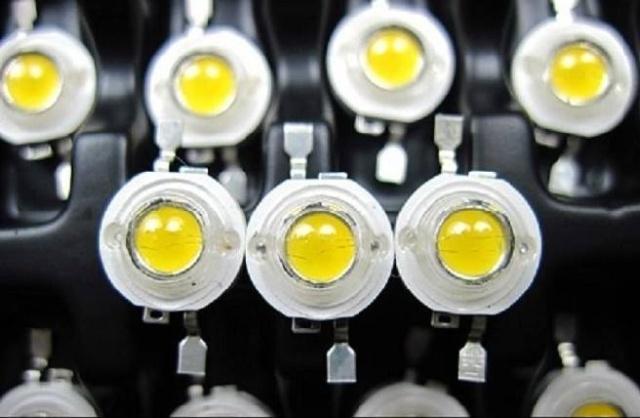
Heat Dissipation Technology
The traditional indicator-type LED packaging structure is generally made by using conductive or non-conductive glue to mount the chip in a small-sized reflector cup or on a stage, and then encapsulating the device with epoxy resin after completing the internal and external connections of the device with gold wires. Its thermal resistance is as high as 250 ~ 300 ℃ / W.
If the new high-power chip adopts the traditional LED packaging form, due to poor heat dissipation, the junction temperature of the chip will rise rapidly and the epoxy carbonization will turn yellow, resulting in accelerated light decay of the device until failure, even due to rapid thermal expansion. The stress caused the open circuit to fail.
Therefore, for high-power LED chips with large operating currents, a new packaging structure with low thermal resistance, good heat dissipation and low stress is the key to technology. The chips are bonded with materials with low resistivity and high thermal conductivity, copper or aluminum heat sinks are added to the lower part of the chips, and a semi-encapsulated structure is used to accelerate heat dissipation, and even a secondary heat dissipation device is designed to reduce the thermal resistance of the device.
Inside the device, flexible silicone rubber with high transparency is filled. In the temperature range of silicone rubber (usually – 40 ~ 200 ℃), the colloid will not cause the device to open circuit due to sudden temperature changes, nor will it turn yellow. Part materials should also fully consider their thermal conductivity and heat dissipation characteristics to obtain good overall thermal characteristics.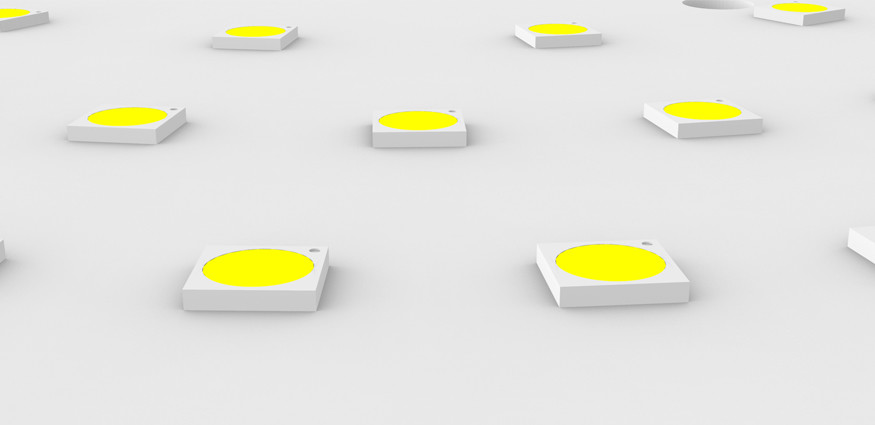
High Power LED White Light Technology
The realization method of white LED
There are three common process methods for realizing white light:
- The blue chip is coated with YAG phosphor, the blue light of the chip excites the phosphor to emit yellow-green light with a typical value of 500-560nm, and the yellow-green light and blue light synthesize white light. The method is relatively simple, efficient, and practical. The disadvantage is that the consistency of the amount of glue is poor, and the phosphor is easy to precipitate, resulting in poor uniformity of the light-emitting surface and poor color consistency. The color temperature is too high, and the color rendering is not ideal.
- Multiple chips or multiple devices of RGB three primary colors emit light and mix into white light. Or use blue + yellow-green dual-chip complementary colors to generate white light. As long as the heat dissipation is good, the white light generated by this method is more stable than the previous method, but the driving is more complicated. In addition, R&D engineers also need to consider the different light decay speeds of different color chips.
- Coat the RGB phosphor on the UV chip, and use the violet light to excite the phosphor to produce three primary colors of light mixed to form white light. However, the current UV chips and RGB phosphors have low efficiency, and epoxy resins are easily decomposed and aged under UV light irradiation.
Problems faced by high-power white LEDs
Having accumulated some experience and experience, we believe that the following technical problems must be solved in order to realize the industrialization of W-class power LED products for lighting: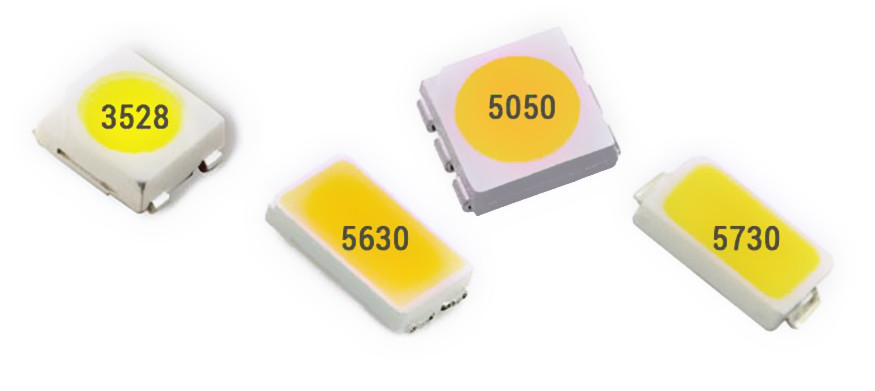
①Powder coating amount control:
The glue coating method used in the LED chip + phosphor process is usually to mix the phosphor and glue and then apply it to the chip with a dispenser. In the operation process, due to the influence of factors such as the viscosity of the carrier glue is a dynamic parameter, the specific gravity of the phosphor is larger than that of the carrier glue and the precipitation and the accuracy of the dispenser, etc., it is difficult to control the uniformity of the coating amount of the phosphor in this process, resulting in white light Uneven color.
②Chip photoelectric parameter coordination:
Due to the characteristics of semiconductor processes, there may be differences in optical parameters (such as wavelength, light intensity) and electrical parameters (such as forward voltage) between chips of the same material on the same wafer. RGB three-color chip is even more so. It has a great influence on the chromaticity parameters of white light. This is one of the key technologies that industrialization must solve.
③Control of light chromaticity parameters according to application requirements:
Products with different uses have different requirements on the color coordinates, color temperature, color rendering, optical power (or light intensity) and spatial distribution of light of white LEDs. The control of the above parameters involves the coordination of various factors such as product structure, process methods, and materials.
In industrial production, it is very important to control the above factors to obtain products that meet the application requirements and have good consistency.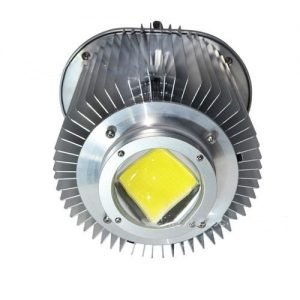
Screening Technology and Reliability Guarantee
Due to the limitation of the appearance of the luminaire, the assembly space of the LED for lighting is sealed and limited. A sealed and limited space is not conducive to LED heat dissipation. This means that the use environment of lighting LEDs is inferior to traditional LED products for display and indication. In addition, lighting LEDs work under high current drive, which puts forward higher reliability requirements for them. In industrial production, it is necessary to formulate appropriate thermal aging, temperature cycle impact, load aging process screening tests for different product uses, to eliminate early failure products, and to ensure product reliability.
Static Protection Technology
For the blue chip on the sapphire substrate, the positive and negative electrodes are located on the chip with a small distance. For InGaN/AlGaN/GaN double heterojunction, the activated thin layer of InGaN is only a few tens of nanometers, which has little resistance to static electricity, and is easily broken down by static electricity, which makes the device fail.
Therefore, in industrial production, whether the prevention of static electricity is appropriate directly affects the yield and economic benefits of the product.
The prevention techniques of static electricity are as follows:
① Implement prevention from human body, workbench, ground, space, and product transmission and stacking. The means include anti-static clothing, gloves, bracelets, shoes, pads, boxes, ion fans, testing instruments, etc.
②The electrostatic protection circuit is designed on the chip.
③The protection device is assembled on the LED.
Ordinary low-power LED package products are mainly found in Asian countries. High-power LED packaging technology is mainly concentrated in Europe and the United States. Due to various reasons, the overall level of development of high-power LED packaging technology is uneven.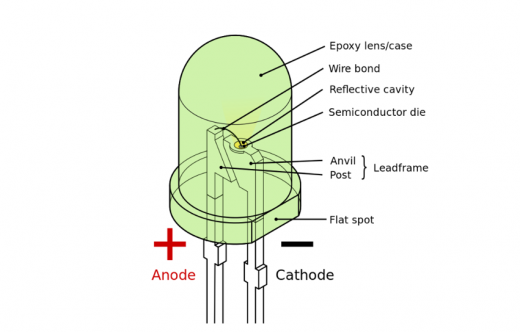
How to Improve the Level of LED Packaging
In order to accelerate the development of LED packaging technology level, we recommend:
① The state should focus on supporting LED pre-process epitaxy and chips. Powerful key research units (universities) and enterprises concentrate their advantages, focus on breaking through key technical difficulties, and develop and produce high-power LED chips with independent property rights such as 1 W, 3 W, 5 W and 10 W as soon as possible. Only in this way can we ensure the smooth development of high-power LEDs.
②The state should focus on fostering powerful high-power LED packaging enterprises and developing LED packaging products with independent property rights. And to achieve large-scale production, to participate in international market competition.
③ Attention should be paid to the research, development and industrialization of basic materials such as phosphors and encapsulation epoxy.
④ According to market requirements, develop various high-power LED products suitable for the market. First aim at the market of special lighting applications, and gradually move towards the market of general lighting sources.






